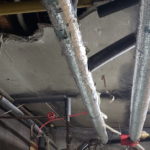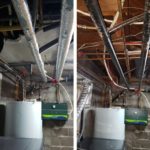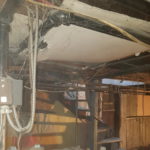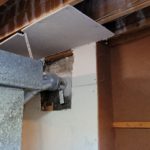Asbestos sheets | What were their uses?
Table of content
- Asbestos Sheets
- Asbestos panels why they were used ?
- Use of asbestos panels
- Asbestos cement panels & asbestos sheet
- What are asbestos cement panels are made of ?
- How do you know if building contains asbestos ?
- What are asbestos ceiling panels and why they were used ?
- What asbestos products are available as asbestos panels ?
- What asbestos products are NOT available in panel form ?
- How can i identify asbestos cement board ?
- How do asbestos cement panels work ?
- The dangers of asbestos panels
- How long does asbestos stay in the air ?
- Trust our team of decontamination experts
- Free quote Online form
Asbestos sheets
Asbestos has been used to make strong, durable and fire-resistant products. Between the 1920s and 1990s, asbestos was primarily used for insulation of buildings and residences against cold and noise. It was also used for fireproofing.
Asbestos fiber has also been used in the manufacture of acoustic ceiling tiles, Placoplâtre joint compounds and vinyl floor tiles.
Asbestos resists heat and fire. It is used to insulate boilers and steam pipes, make gaskets, etc. Asbestos remains used in the manufacture of brake pads in several countries.
Asbestos boards may be composed of asbestos fibers in a matrix such as cement, resin or asbestos paper. Asbestos boards are used in various construction and engineering projects due to their ability to absorb sound and resist damage from fire and weather
However, asbestos is toxic when released into the atmosphere from building materials that have been damaged or asbestos materials that have been worn away by age or mishandling. Asbestos is also the leading cause of asbestosis, a lung disease caused by inhaling asbestos fibers.
Decontamination service
- Asbestos at home
- Asbestos insulation
- Asbestos Panels
- Asbestos ceiling
- Asbestos in walls
- Asbestos floor
Asbestos panels Why they were used ?
Asbestos board is a type of asbestos insulation that was used in Canada and the United States for buildings, homes and structures from the 1920s to the mid-1970s. It is more commonly called asbestos wallboard or asbestos board because it usually contains a lot of asbestos and is almost always in the form of drywall. Its use in Canada and the United States was banned in building materials in the mid-1970s and asbestos boards are no longer used in homes built after 1978, although some older buildings still contain asbestos insulation.
The term “asbestos board” refers to building materials containing asbestos. Asbestos was widely used in the construction industry due to its thermal, fireproofing and insulating properties. However, due to the health risks associated with inhaling asbestos fibers, its use has been heavily restricted or even banned in many countries.
Here are some common uses for asbestos-containing panels:
- Thermal and acoustic insulation: Asbestos panels were often used for thermal and acoustic insulation in buildings. They were present in the form of plates or panels in walls, ceilings and floors.
- Roofing Materials: Fiber cement roofs, made of asbestos and cement, were popular because of their durability and fire resistance. These panels were used for the construction of sloping roofs.
- Flooring: Some flooring, such as vinyl tiles containing asbestos, were used in the past.
- Exterior coverings: Some exterior coverings of buildings could also contain asbestos.
It is important to note that the use of asbestos has been largely abandoned due to its links to serious health problems, including lung cancer, asbestosis and mesothelioma. Today, it is essential to take appropriate precautions when handling or renovating buildings that may contain asbestos.
Use of Asbestos Panels
Asbestos board is used as asbestos insulation in walls and ceilings of homes, offices and buildings. It was also used as asbestos insulation on pipelines, commercial furnaces and fireplaces.
The asbestos fibers in asbestos insulation are so small that they cannot be seen with the naked eye. However, when asbestos boards are cut or disturbed during renovations or repairs, asbestos fibers can become loose.
In America alone, from the 1920s to the 1970s, asbestos boards and insulation were used to insulate more than 1.5 million homes and other buildings. This asbestos insulation was used for insulating walls, ceilings, floors and attics, as well as insulating furnaces. In addition to asbestos boards used for insulation, asbestos tile boards were also a popular asbestos product used in home construction many years ago.
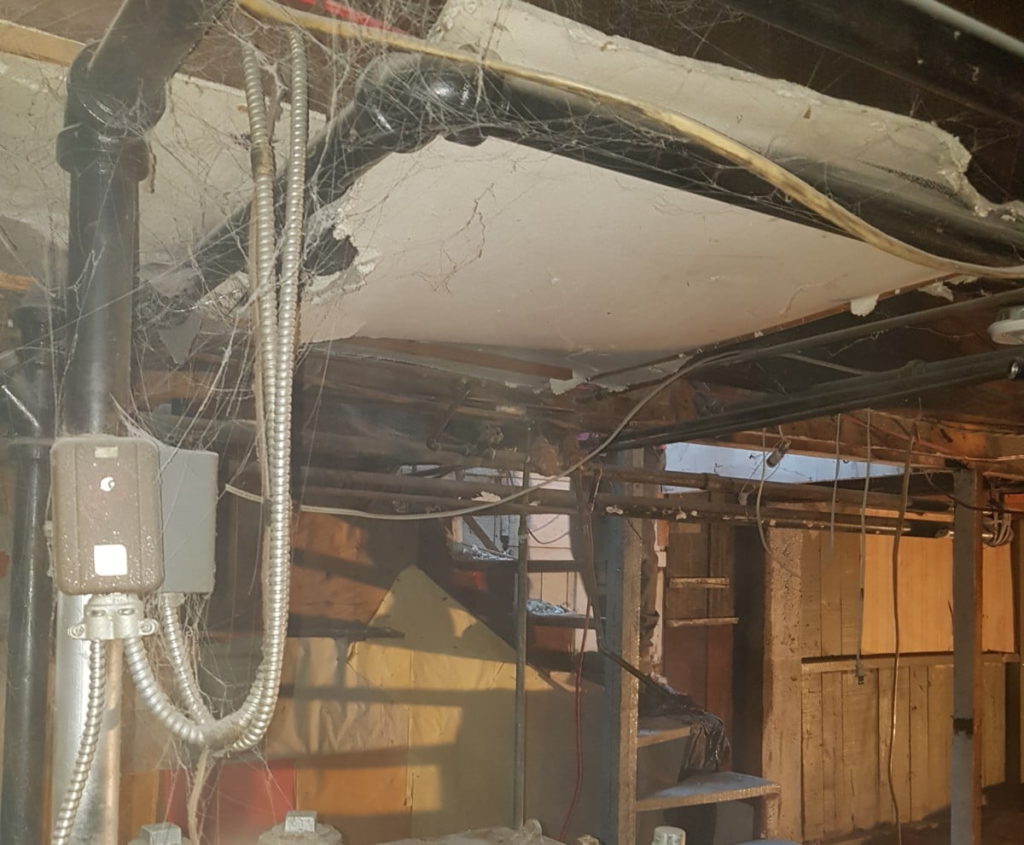
Asbestos cement panel & asbestos sheet | Asbestos plate
Asbestos is a term generally used to refer to magnesium silicate fibers. It was mined from the earth and used as insulation, primarily as asbestos board or asbestos-cement board.
There are two main asbestos products: asbestos panels (asbestos sheet) and asbestos insulation panels. Asbestos boards normally contain asbestos added as a reinforcing agent to consolidate the mattress which contains the asbestos. The mixture is then made into asbestos sheet or asbestos panel.
Asbestos board is a type of board that is made from asbestos. There are 4 types: alloy, paper, fabric and ordinary panels. The ordinary panel is mainly used in the construction industry for interior and exterior wall cladding and partitioning. Asbestos cement boards were also used as flat insulation on roofs and walls of homes and commercial buildings between the 1970s and 1980s. It was popular because it was easy to work with and inexpensive.
Asbestos sheets (also called transite boards) are used in commercial buildings for interior partitions, ceilings and exterior cladding. It has also been widely used for damp proof layers around the base of buildings.
What are asbestos cement panels made of ?
They are made from a mixture of asbestos and cement. This mixture is called transite, which makes it stronger than regular cement, but not as strong as concrete.
When the asbestos sheet or board begins to wear or come loose, tiny fibers are released into the air. If not removed by ventilation or high pressure cleaning, they can be breathed in and cause serious health problems. Breathing asbestos increases the risk of developing mesothelioma and other asbestos-related lung diseases.
Asbestos panels are made from a mixture of asbestos and cement. This type of material was commonly used in construction for various applications due to its properties such as heat resistance, durability and weather resistance. This is how asbestos cement boards were typically made:
- Asbestos: Asbestos is a natural mineral fiber that has been used in many construction products due to its resistance to heat and wear. The most commonly used types of asbestos were chrysotile asbestos, amosite asbestos and crocidolite asbestos.
- Cement: Cement, often used as a binder in construction, is mixed with asbestos to form a paste. Cement contributes to the strength and stability of the panels.
- Other additives: Some asbestos cement boards may contain other additives or reinforcements to improve certain properties, such as weather resistance.
The asbestos and cement mixture was then pressed and shaped to form flat panels or specific products depending on construction needs. Common applications for these panels included roof coverings, cladding, partitions, and other building elements.
How do you know if a building contains asbestos ?
To determine if a building contains asbestos material, specific measurements must be taken. This often involves a professional assessment carried out by asbestos management experts. Here are some general steps you can follow to determine the presence of asbestos in a building:
- Visual Inspection: Examine the building for materials that may contain asbestos. This may include roof coverings, siding, wall panels, pipes, and other building materials.
- Historical Information: View historical records and documentation regarding the construction of the building. Building plans, specifications and other documents may sometimes indicate the use of asbestos in the building.
- Hire Qualified Professionals: For a more in-depth assessment, hire qualified asbestos management professionals. These experts can perform detailed inspections, take samples and submit them for laboratory analysis to determine the presence of asbestos.
- Laboratory analysis: Samples taken from suspect materials can be analyzed in the laboratory to detect the presence of asbestos and identify the type of asbestos present.
- Professional Diagnosis: Based on the results of the laboratory analysis, asbestos management professionals can provide a comprehensive diagnosis and recommendations for asbestos management or remediation, if applicable.
If you suspect asbestos in your home, do not try to remove it yourself.
What are Asbestos ceiling panels and why they were used ?
Asbestos ceiling panels were building materials used in construction during the mid-20th century. These panels were a part of the broader use of asbestos in various construction applications due to its desirable properties. Here’s an overview:
Composition:
- Asbestos ceiling panels were typically made by combining asbestos fibers with other materials, often including cement or other binding agents.
Properties:
Fire Resistance: Asbestos is highly resistant to fire, making it a preferred material for applications where fire safety was a concern, such as ceilings.
Durability: Asbestos provides durability and strength to building materials, contributing to their longevity and resistance to wear and tear.
Insulation: Asbestos fibers have insulating properties, which made asbestos ceiling panels useful for providing both thermal and acoustic insulation.
Common Uses:
- Asbestos ceiling panels were widely used in commercial and residential buildings for suspended ceilings. They were appreciated for their fire-resistant nature and ability to improve acoustic performance within a space.
Why They Were Used:
Fire Safety: Asbestos is inherently fire-resistant, which was a crucial factor in its widespread use, especially in public buildings and spaces where fire safety regulations were stringent.
Affordability: Asbestos was a cost-effective material, making it an attractive choice for construction projects during a period when its health risks were not widely understood.
Insulation Benefits: Asbestos provided both thermal and sound insulation, contributing to its popularity in ceiling applications.
However, it’s important to note that the use of asbestos in construction materials has significantly declined and, in many places, is now regulated or banned due to the well-established health risks associated with asbestos exposure. Asbestos fibers, when disturbed, can become airborne and pose serious health risks, including lung diseases and cancer.
What asbestos products are available as asbestos panels?
A wide range of asbestos cement products are offered by various manufacturers in Canada.
For example, asbestos boards, asbestos shingles, asbestos cladding, prefabricated asbestos-cement panels, asbestos-cement pipes, asbestos-cement flat sheets for roofing and wall panels , corrugated asbestos-cement sheets for roofs and acoustic ceilings, asbestos felt products (with or without coating), asbestos-cement mats (waterproof mats used as garage tiles, etc.), asbestos insulation boards (used in various construction applications, such as construction of houses, buildings, etc.
Asbestos is a mineral fiber that was commonly used in various building materials due to its fire-resistant and durable properties. However, its use has significantly declined due to health concerns associated with asbestos exposure, particularly the risk of developing asbestos-related diseases such as lung cancer and mesothelioma.
Asbestos-containing panels were widely used in construction and other industries. Common types of asbestos panels included:
Asbestos Cement Panels: These panels were made by mixing asbestos fibers with cement. Asbestos cement panels were commonly used in roofing, siding, and as flat sheets in construction.
Asbestos Insulation Boards: These boards were used for thermal and acoustic insulation. They were commonly used in walls, ceilings, and around boilers and pipes.
Asbestos Wallboard: Asbestos-containing materials were used in some wallboard products for their fire-resistant properties.
Asbestos Ceiling Tiles: Some ceiling tiles contained asbestos to enhance fire resistance.
Asbestos Reinforced Plastic Panels: Asbestos fibers were sometimes added to plastic materials for reinforcement.
It’s important to note that the use of asbestos in building materials has been restricted or banned in many countries due to health concerns. If you are dealing with older structures or materials and suspect the presence of asbestos, it is crucial to take appropriate precautions. Asbestos-containing materials are hazardous when damaged or disturbed because they can release asbestos fibers into the air.
If you have concerns about asbestos in your home or workplace, it is recommended to consult with asbestos removal professionals who can assess the situation and, if necessary, safely remove and dispose of asbestos-containing materials. Additionally, regulations and guidelines regarding asbestos may vary by region, so it’s essential to be aware of local laws and regulations.
What asbestos products are NOT available in panel form?
While asbestos-containing panels were commonly used in construction and various industries, asbestos was also incorporated into a wide range of other products. Asbestos was valued for its heat resistance, strength, and insulating properties. Products that may contain asbestos, but are not in panel form, include:
Asbestos Pipe Insulation: Asbestos was commonly used as insulation for pipes, particularly in industrial settings. It could be applied in a loose form or as pre-formed pipe insulation.
Asbestos Floor Tiles: Asbestos was used in vinyl and asphalt floor tiles for its durability and fire resistance. These tiles could come in various shapes and sizes.
Asbestos Textiles: Asbestos fibers were woven into textiles, such as cloth, tape, and rope, to create fire-resistant materials. These textiles were used in a variety of applications, including insulation and gaskets.
Asbestos Gaskets and Seals: Asbestos was often used in the manufacturing of gaskets and seals for its resistance to heat and chemicals.
Asbestos Brake Pads and Clutch Facings: Asbestos was historically used in the automotive industry for brake pads and clutch facings due to its heat-resistant properties.
How can I identify asbestos cement boards?
Asbestos cement panels are generally gray in color. If the asbestos cement is painted, the surface and the grooves and holes will be darker than the paint around them. If the asbestos panels are covered with plastic sheathing or laminate, their asbestos content can be found under the sheathing or laminate, near the edges of each panel.
Asbestos cement boards were commonly used in construction for their durability and fire-resistant properties. To identify asbestos cement boards, you can consider the following steps:
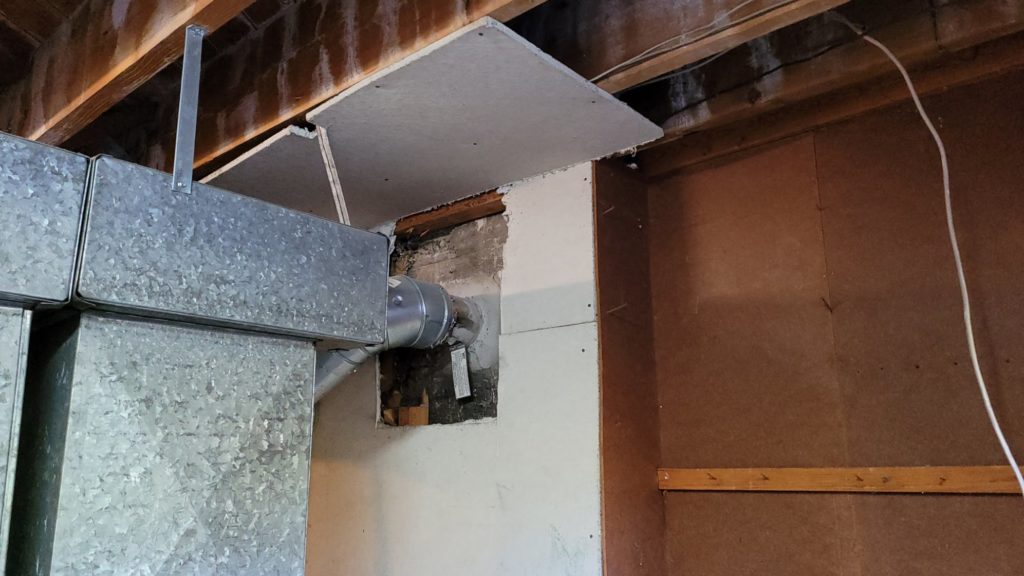
Age of the Structure: Asbestos-containing materials were widely used in construction until the late 20th century. If the building was constructed before the 1980s, there’s a higher likelihood of asbestos-containing materials, including asbestos cement boards.
Professional Inspection: The most reliable method for identifying asbestos-containing materials is through a professional inspection by an accredited asbestos inspector. These individuals have the training and equipment to safely collect samples for testing.
Visual Inspection: Asbestos cement boards may have a distinctive appearance. They are typically gray or beige in color and have a flat, smooth surface. The boards may have visible fibers embedded in the cement matrix.
Check Documentation: Review any available documentation related to the construction of the building. Building plans, records, or specifications may mention the use of asbestos-containing materials.
Laboratory Testing: Asbestos identification cannot be confirmed visually. Laboratory testing of a sample is necessary to determine if asbestos is present. This testing should be conducted by a certified laboratory.
Professional Asbestos Testing Services: There are professional asbestos testing services that can collect samples from suspected materials and provide accurate analysis. It’s important to follow proper procedures when collecting samples to avoid exposure.
Look for Brand Markings: Some asbestos cement boards may have brand markings or labels indicating the presence of asbestos. Check for any product information that may be present on the boards.
Remember that asbestos can be hazardous when disturbed, as it can release fibers into the air. If you suspect the presence of asbestos cement boards, it’s essential to avoid disturbing the material and seek professional assistance for proper identification and, if necessary, safe removal.
Always prioritize safety when dealing with potential asbestos-containing materials, and consult with qualified professionals to assess and manage the situation appropriately.
How do asbestos cement panels work?
They provide insulation and fireproofing, resist corrosion and can even reduce noise inside homes or buildings. For example, asbestos-cement roofing sheets not only make the house more comfortable (by reducing temperature fluctuations) but also reduce energy consumption. Additionally, asbestos cement products do not rot and are resistant to rodents as well as microorganisms that destroy wood.
The asbestos fibers are embedded in the cement matrix to create a strong and versatile building material. Here’s an overview of how asbestos cement panels work:
Composition: Asbestos cement panels are primarily made from a mixture of Portland cement and asbestos fibers. The asbestos fibers, which are typically chrysotile (white asbestos), amosite (brown asbestos), or crocidolite (blue asbestos), are added to the cement in varying proportions.
Formation Process: The manufacturing process involves blending the asbestos fibers with cement, water, and other additives. This mixture is then formed into flat sheets or panels through a molding or extrusion process.
Properties:Asbestos fibers contribute several beneficial properties to the cement panels, including :
- Fire Resistance: Asbestos provides fire resistance, making the panels suitable for use in applications where fire protection is a concern.
- Durability: Asbestos cement panels are known for their durability and resistance to weathering.
- Strength: Asbestos reinforcement enhances the structural strength of the panels.
Versatility: Asbestos cement panels are versatile and can be used for various construction applications. They were commonly used for roofing, siding, cladding, and as flat sheets in building construction.
Insulating Properties: Asbestos fibers have insulating properties, which can contribute to the thermal performance of the panels. This made asbestos cement panels desirable for certain applications where insulation was important.
Weather Resistance: Asbestos cement panels are resistant to weathering, providing a durable and long-lasting solution for external applications. They were often used in regions with harsh climates.
The dangers of asbestos panels
When asbestos boards were first used in the 1960s and 1970s, they became common and widely used in home renovation and construction. Although asbestos was attractive due to its durability, fire retardant and sound insulation properties, asbestos panels also presented significant health risks that are still felt today. Asbestos on an exterior wall can be particularly dangerous if it begins to wear or deteriorate. It can not only release asbestos particles into the air but also into the ground or water supplies.
When asbestos panels are used for interior walls, floors and ceilings, asbestos particles can be released into the air over time due to normal wear and tear. It is one of the most common causes of asbestos exposure. Asbestos fibers are released into the air when two surfaces rub together enough that the asbestos layer is sanded away. With time. Asbestos particles can accumulate on nearby surfaces, such as furniture and other materials.
However, as asbestos became a known carcinogen after research by medical professionals came to light, the use of asbestos panels has been banned in some countries around the world. In Australia, asbestos was finally banned as recently as 2003, but asbestos has been banned in other countries for years. Proper asbestos containment methods should always be used when asbestos panels are removed. For example, wearing a respirator when cutting or sanding asbestos boards is important to avoid breathing in asbestos fibers.
If you suspect asbestos may be present in your home or business, contact professionals for more information on asbestos containment. If the asbestos panels are in good condition, it may be best to leave them alone to prevent asbestos particles from being released into the air. If asbestos panels or tiles need to be removed, professional services will know how to safely remove and dispose of the asbestos. Asbestos boards were no longer used in homes after the 1970s because of these health risks. After the discovery of the carcinogenic nature of asbestos, asbestos panels were used less often for soundproofing and more often as insulation.
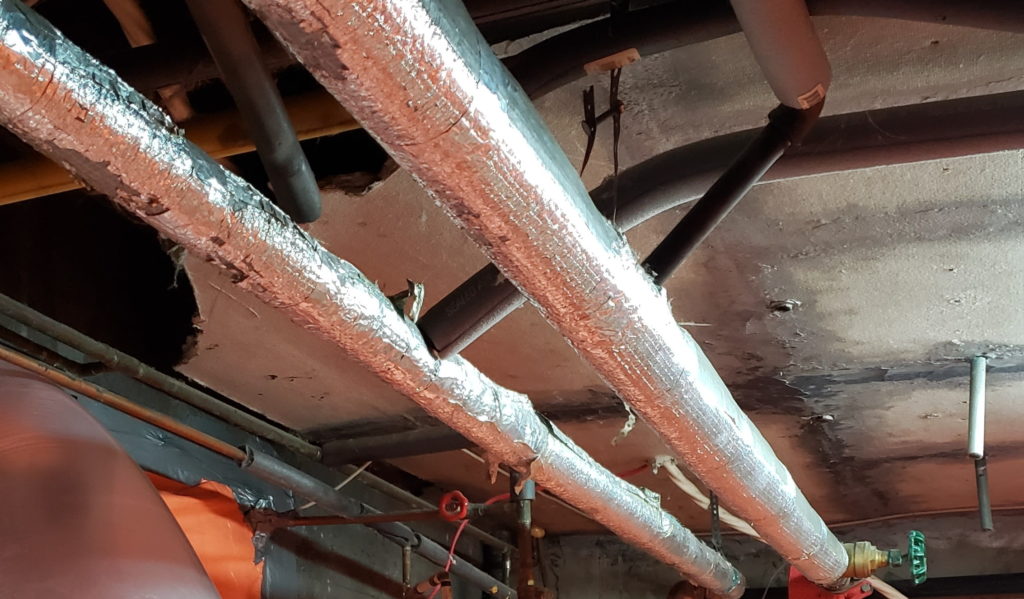
How long does asbestos stay in the air?
Exposure to asbestos from damaged materials can pose a danger to anyone who inhales the tiny particles. The lifespan of a particle in the air is called its “lifespan.” Asbestos fibers have a very long lifespan, meaning they remain suspended in the air for a long time after have been released.
Asbestos fibers are very light and can be carried by wind over long distances. They can also cling to dust particles already in the air.
When asbestos-containing materials are damaged, asbestos fibers are released into the air. Asbestos can also end up in the air if it is disturbed while working on buildings or structures containing asbestos. Some types of asbestos insulation and other building materials can be safely left in place or repaired. If these materials are removed, the asbestos fibers they contain become airborne and pose a danger to anyone who might disturb them.
Asbestos poses serious health risks when present in the dust or dirt that people breathe. For this reason, asbestos is classified as a human carcinogen. The best way to avoid exposure to asbestos fibers is to prevent them from becoming airborne. If this is not possible, prompt cleaning of any asbestos-containing materials will limit people’s exposure.
When materials that contain asbestos are damaged, asbestos fibers spread into the surrounding air. Being in a place where this type of operation takes place therefore represents a health risk. Once released into the air, the fibers remain suspended in the air for 24 to 48 hours before falling to the ground. At the slightest movement, the particles that have fallen to the ground are projected back into the air, it’s like an endless vicious circle.
Trust our team of decontamination experts
Regardless of the type of asbestos insulation found in your property or building, know that the Gestion Xpress Démolition team is certified and holds the appropriate licenses and insurance to help you overcome this problem. scourge. All asbestos decontamination work is done according to standards and in a more than safe manner to guarantee your safety and that of your family. For a quick and free quote, go to our online quote page and we will be very happy to come and meet you.

